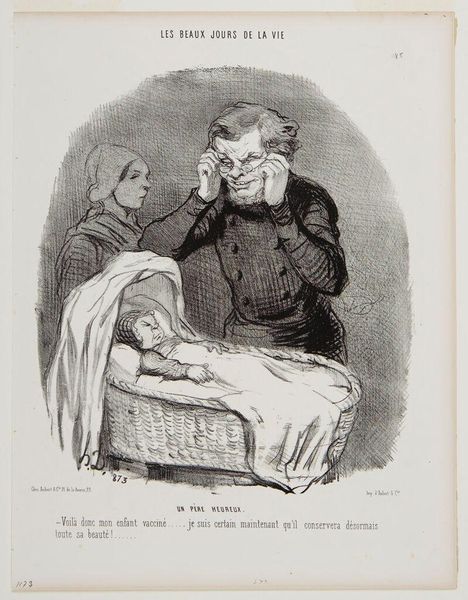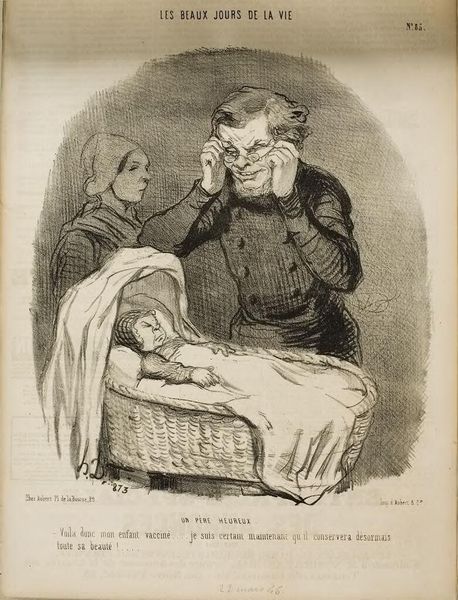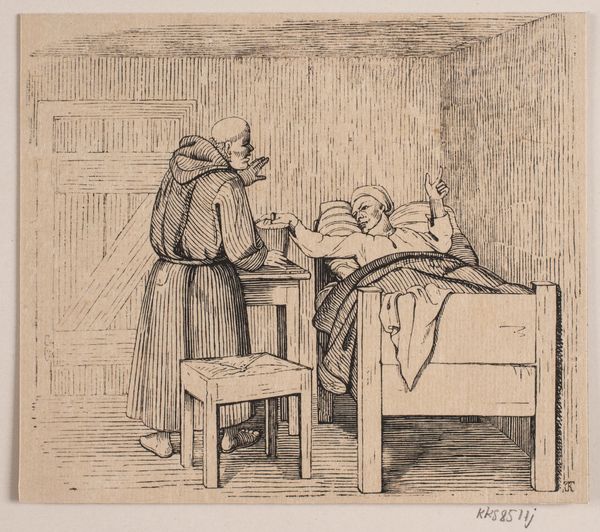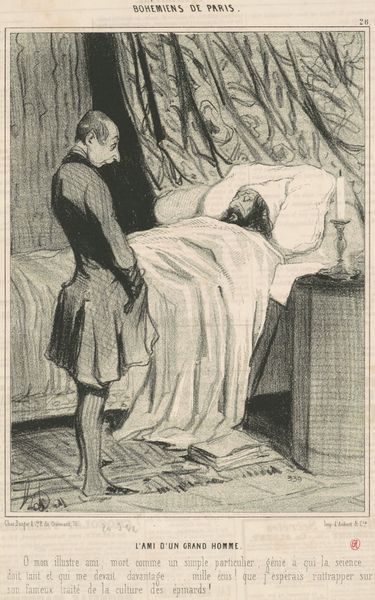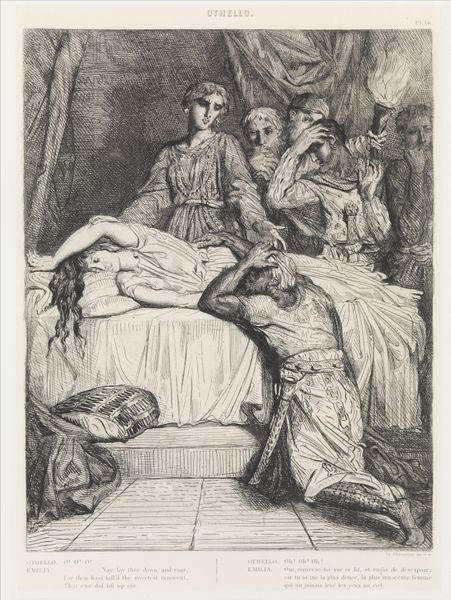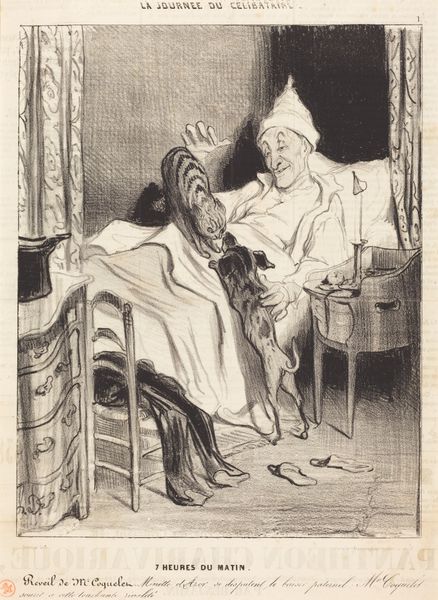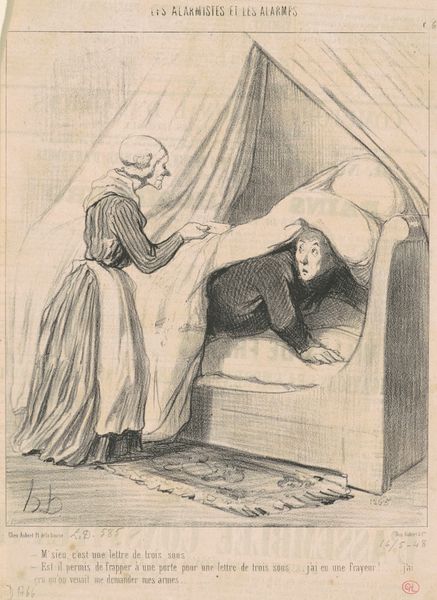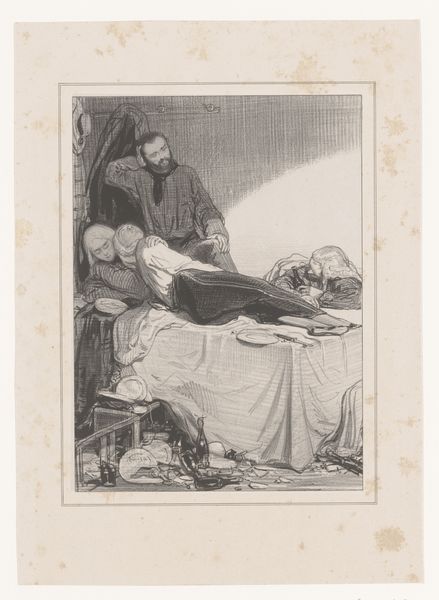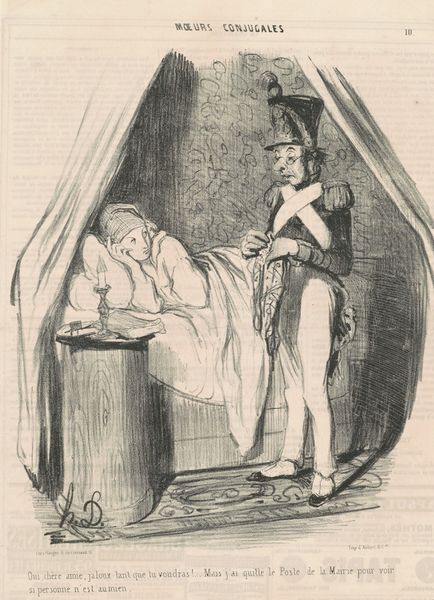
lithograph, print
#
portrait
#
lithograph
# print
#
caricature
#
caricature
#
genre-painting
Copyright: National Gallery of Art: CC0 1.0
Editor: This is Honoré Daumier's "Un Père heureux," or "A Happy Father," a lithograph from 1846. The father’s peering down at the baby with an… intense expression. It strikes me as less about happiness and more about scrutinizing. What symbols do you see at play here? Curator: Indeed, the title’s ironic contrast is key. Consider the visual cues: the father’s exaggerated features – the squint, the clutching of his glasses – paired with the rather cross-looking baby. Daumier masterfully uses caricature, a tradition rooted in subverting social norms. The very act of exaggerated looking – seeing itself – becomes a symbol. Editor: So, it's not just about seeing, but *how* we see. Is there anything else the father's gaze might be representing? Curator: Precisely! The father's anxious inspection could symbolize societal expectations around fatherhood, or even anxiety about legacy and continuation. Is he scrutinizing for signs of himself? Does the child reflect the values the father holds? Editor: And the mother seems relegated to the background, almost an afterthought. Does that inform the reading? Curator: It underscores the patriarchal structure, doesn’t it? The image hints at who wields the power of observation, the power of interpretation. Consider the bonnet obscuring her features, as opposed to the baby, on display, and the father with glasses as a lens. This adds layers of complexity, revealing entrenched attitudes toward domestic roles. Editor: It's amazing how much visual language Daumier packs into a simple lithograph. I definitely see it with fresh eyes now. Curator: Daumier offers a potent reminder to question the visual cues, to challenge what images tell us – and what they conceal – about the power dynamics woven into everyday life. It's cultural memory etched in ink.
Comments
No comments
Be the first to comment and join the conversation on the ultimate creative platform.
